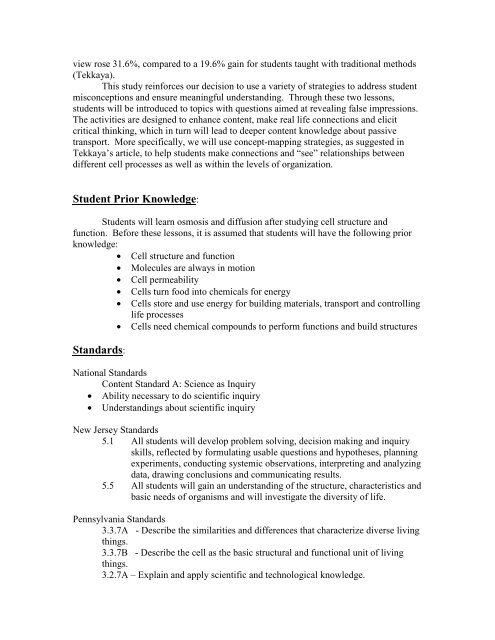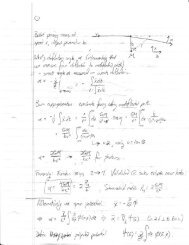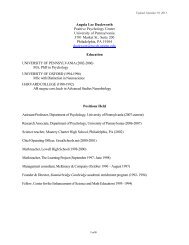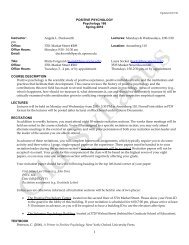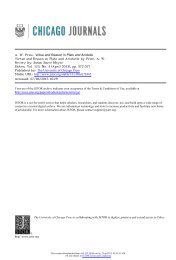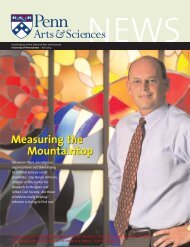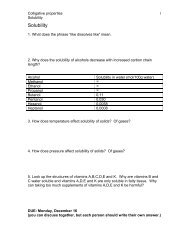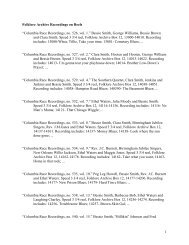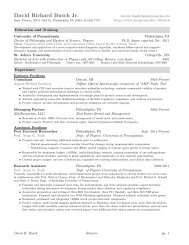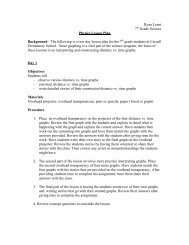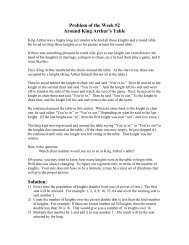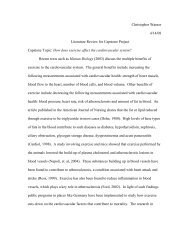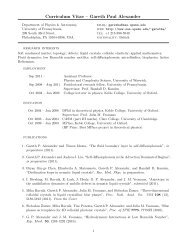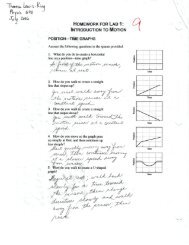Osmosis and Diffusion Audience - School of Arts & Sciences
Osmosis and Diffusion Audience - School of Arts & Sciences
Osmosis and Diffusion Audience - School of Arts & Sciences
Create successful ePaper yourself
Turn your PDF publications into a flip-book with our unique Google optimized e-Paper software.
view rose 31.6%, compared to a 19.6% gain for students taught with traditional methods<br />
(Tekkaya).<br />
This study reinforces our decision to use a variety <strong>of</strong> strategies to address student<br />
misconceptions <strong>and</strong> ensure meaningful underst<strong>and</strong>ing. Through these two lessons,<br />
students will be introduced to topics with questions aimed at revealing false impressions.<br />
The activities are designed to enhance content, make real life connections <strong>and</strong> elicit<br />
critical thinking, which in turn will lead to deeper content knowledge about passive<br />
transport. More specifically, we will use concept-mapping strategies, as suggested in<br />
Tekkaya’s article, to help students make connections <strong>and</strong> “see” relationships between<br />
different cell processes as well as within the levels <strong>of</strong> organization.<br />
Student Prior Knowledge:<br />
Students will learn osmosis <strong>and</strong> diffusion after studying cell structure <strong>and</strong><br />
function. Before these lessons, it is assumed that students will have the following prior<br />
knowledge:<br />
• Cell structure <strong>and</strong> function<br />
• Molecules are always in motion<br />
• Cell permeability<br />
• Cells turn food into chemicals for energy<br />
• Cells store <strong>and</strong> use energy for building materials, transport <strong>and</strong> controlling<br />
life processes<br />
• Cells need chemical compounds to perform functions <strong>and</strong> build structures<br />
St<strong>and</strong>ards:<br />
National St<strong>and</strong>ards<br />
Content St<strong>and</strong>ard A: Science as Inquiry<br />
• Ability necessary to do scientific inquiry<br />
• Underst<strong>and</strong>ings about scientific inquiry<br />
New Jersey St<strong>and</strong>ards<br />
5.1 All students will develop problem solving, decision making <strong>and</strong> inquiry<br />
skills, reflected by formulating usable questions <strong>and</strong> hypotheses, planning<br />
experiments, conducting systemic observations, interpreting <strong>and</strong> analyzing<br />
data, drawing conclusions <strong>and</strong> communicating results.<br />
5.5 All students will gain an underst<strong>and</strong>ing <strong>of</strong> the structure, characteristics <strong>and</strong><br />
basic needs <strong>of</strong> organisms <strong>and</strong> will investigate the diversity <strong>of</strong> life.<br />
Pennsylvania St<strong>and</strong>ards<br />
3.3.7A - Describe the similarities <strong>and</strong> differences that characterize diverse living<br />
things.<br />
3.3.7B - Describe the cell as the basic structural <strong>and</strong> functional unit <strong>of</strong> living<br />
things.<br />
3.2.7A – Explain <strong>and</strong> apply scientific <strong>and</strong> technological knowledge.


